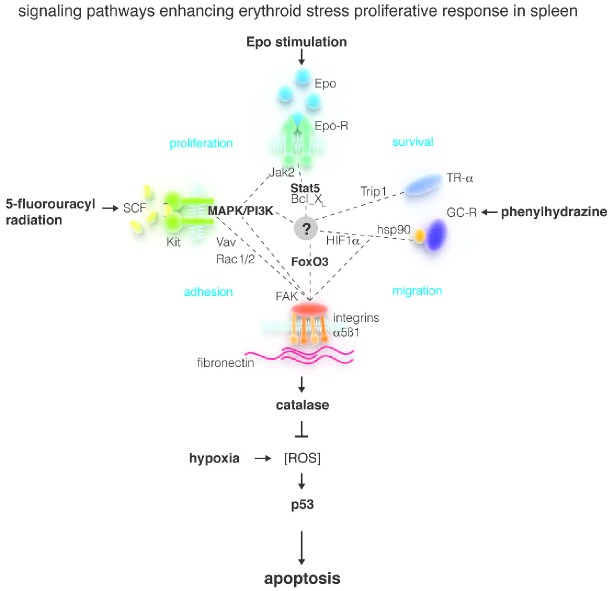Figure 1.
A model for the control of ROS production during the maturation of erythroid cells under conditions of stress erythropoiesis. Hypoxia induced by stress challenges generates ROS that induce the formation of stress-specific erythroid progenitor cells. These progenitor cells are poised to receive signals delivered by stress-specific growth factors (SCF and Epo) and hormones (glucocorticoids and thyroid hormone) to respond to integrin outside-in signals. Stress-specific niches present in murine spleen, and equivalent niches in human marrow, induce through the integrin axes stress-specific erythroid cells to produce greater levels of catalase (and probably other enzymes) reducing the levels of ROS generated by hypoxia in these cells, allowing them to escape ROS-activated p53-dependent death, to generate great numbers of RBCs. (modified from Online Supplementary Figure 3BS by Ulyanova et al.6)

